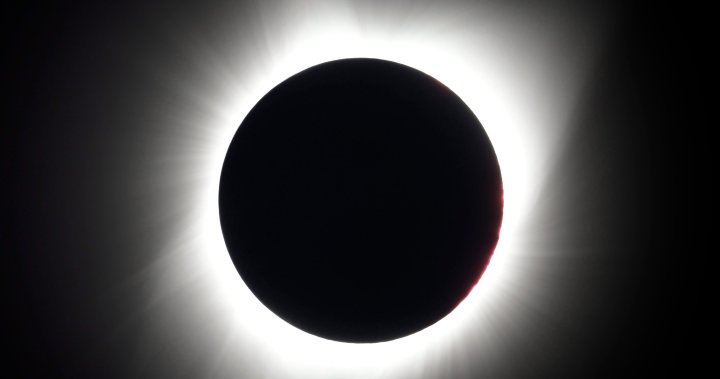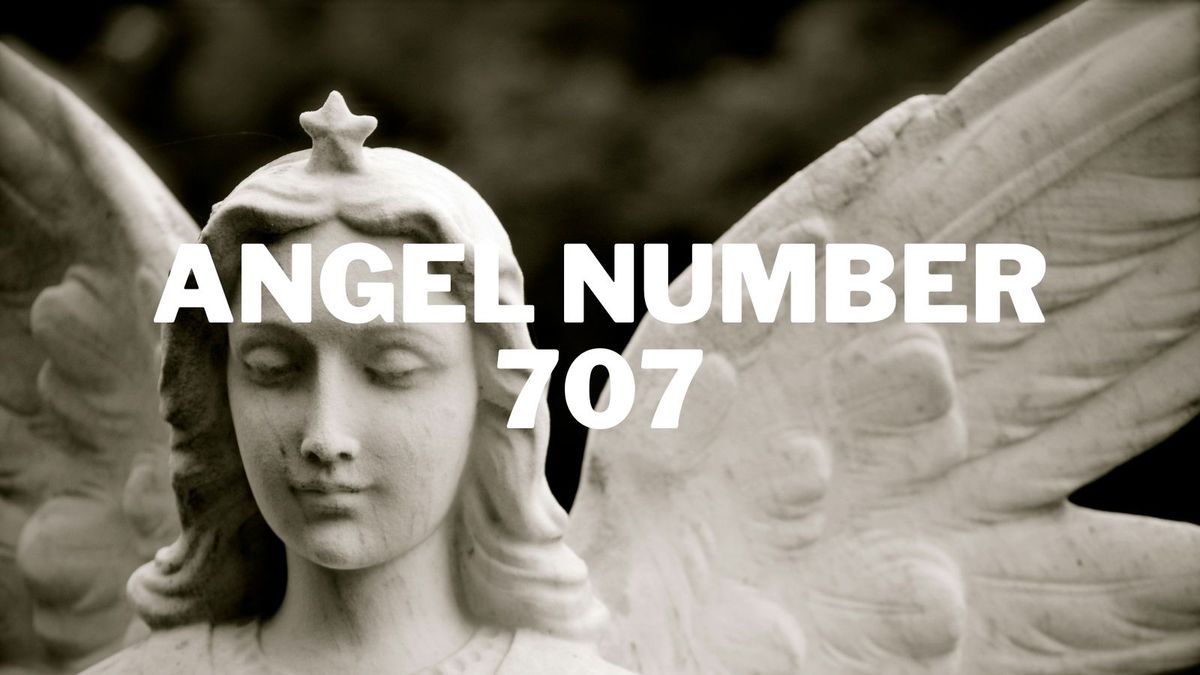[ad_1]
A total solar eclipse is set to darken skies across central and Eastern Canada in a rare celestial event last witnessed in the country 45 years ago.
On April 8, the eclipse’s path will cross through Ontario, Quebec, New Brunswick, Prince Edward Island, Nova Scotia, and Newfoundland and Labrador. Several cities and towns will go into complete darkness during the day for a few minutes.
A total solar eclipse occurs when the moon passes between the sun and the Earth, aligning perfectly and completely blocking the sunlight.
Typically, a total solar eclipse is visible once roughly every 18 months or once every one to two years from somewhere on Earth, but for a given location this can be a very rare occurrence coming after a gap of centuries.
“It’s one of those once-in-a-lifetime things that you know you might not be able to get to experience again,” said Ilana MacDonald, outreach co-ordinator for the Dunlap Institute for Astronomy & Astrophysics at the University of Toronto.

The last time the path of a total solar eclipse crossed Canada was in 1979.
For Kingston, Ont., it’s the first one in nearly 700 years, said Robert Knobel, associate professor and head of the department of physics, engineering physics and astronomy at Queen’s University in the city.
“It’s a beautiful, natural phenomenon and it allows us to actually think about our place in the universe,” he said in an interview with Global News.
“It really allows us a chance to experience astronomical phenomena, just by walking outside.”
Millions of people in parts of central and eastern Canada will get to witness this celestial event.
The eclipse will be entering over Mexico’s Pacific coast, dashing up through Texas and Oklahoma, and crisscrossing the Midwest, Mid-Atlantic and New England, before exiting over Eastern Canada into the Atlantic.
The total solar eclipse will have a narrow path roughly 185 kilometres wide.
This image from the NASA Eclipse Explorer website shows the path of the April 8, 2024 total solar eclipse over North America. An estimated 44 million people live inside the 110-mile-wide (180-kilometre-wide) path of totality stretching from Mazatlán, Mexico to Newfoundland.
NASA via AP
The path of totality is a line that goes diagonally from the southwest to the northeast in North America, Knobel said.
In Ontario, places like Fort Erie and Niagara Falls will be “really good” spots to view the eclipse since the central path of totality is going through Lake Ontario, he said.
However, both Ottawa and Toronto, like many other cities, will only get a partial solar eclipse, in which the sun is not hidden in totality.
In Quebec, Montreal, Sherbrooke, and the Saint Lawrence Valley will also get a good view.
The eclipse will occur between mid and late afternoon, depending on location, in Canada.
Photo courtesy: Canadian Space Agency
As the moon starts to obscure the sun, it will initially start out as a partial eclipse, when the sky gets darker and it becomes cooler.
“What you’ll see is a little bit of a crescent as the moon shadow passes in front of the sun,” Knobel said.
But the moment it goes from a partial eclipse to totality, you will notice a “dramatic change in temperature and light,” MacDonald said.
“As the moon completely covers the sun, you’ll have this big halo of light around the sun and that’s the sun’s corona, which you can’t usually see when the sun is just in the sky, because the sun itself is too bright,” she explained.
The moon covers the sun during a total eclipse Monday, Aug. 21, 2017, near Redmond, Ore.
AP Photo/Ted S. Warren
Dan Falk, a science journalist in Toronto, has travelled across the world and witnessed five total solar eclipses, the most recent one in Oregon in 2017.
He said at the time of totality people will get to see a little black disk surrounded by halo and it will appear as if there is a little hole in the sky.
“It’ll be this very eerie, kind of surreal phenomenon that’s really not like anything else you can see,” he said.
“I’m hoping that lots of people, especially folks who haven’t had the chance to see this phenomenon before, are able to experience this.”
The total solar eclipse can last between one and four minutes, MacDonald said.
During this time, birds will start to react as if it’s nighttime and could start to fall asleep. Meanwhile, flowers will start to close just for those few minutes.
When totality is over, it’ll get bright again.
The peak spectacle on April 8 will last up to four minutes and 28 seconds in the path of total darkness.
How can you safely view it?
In preparation for the event, some school boards in Ontario and Quebec have already cancelled classes on April 8 out of an abundance of caution.
According to the Canadian Space Agency, looking directly at the sun without appropriate protection can lead to serious problems such as partial or complete loss of eyesight.
Experts stress that the danger of looking directly at the sun is not any different when there is a total solar eclipse as it would be on any other day of the year. It’s just that one is more tempted to look up when there is a total solar eclipse.
“It’s always dangerous to look directly at the sun without proper protection because the sun is very bright,” MacDonald said.

The best way to protect yourself is by wearing eclipse glasses, made up of aluminized polyester, when you do look up during a partial eclipse.
People can also use cardboard and poke a hole through it or even a colander and cheese grater would work.
In the moments of totality, when the sun is completely covered, it is actually safe to take your glasses off for a few minutes safely and look up, Knobel and Falk said.
After this year, the next time a solar eclipse will be visible from Canadian soil will be in 2039, when the path of totality cuts the very northern part of Yukon.
— with files from The Associated Press
Maqvi News #Maqvi #Maqvinews #Maqvi_news #Maqvi#News #info@maqvi.com
[ad_2]
Source link




















































